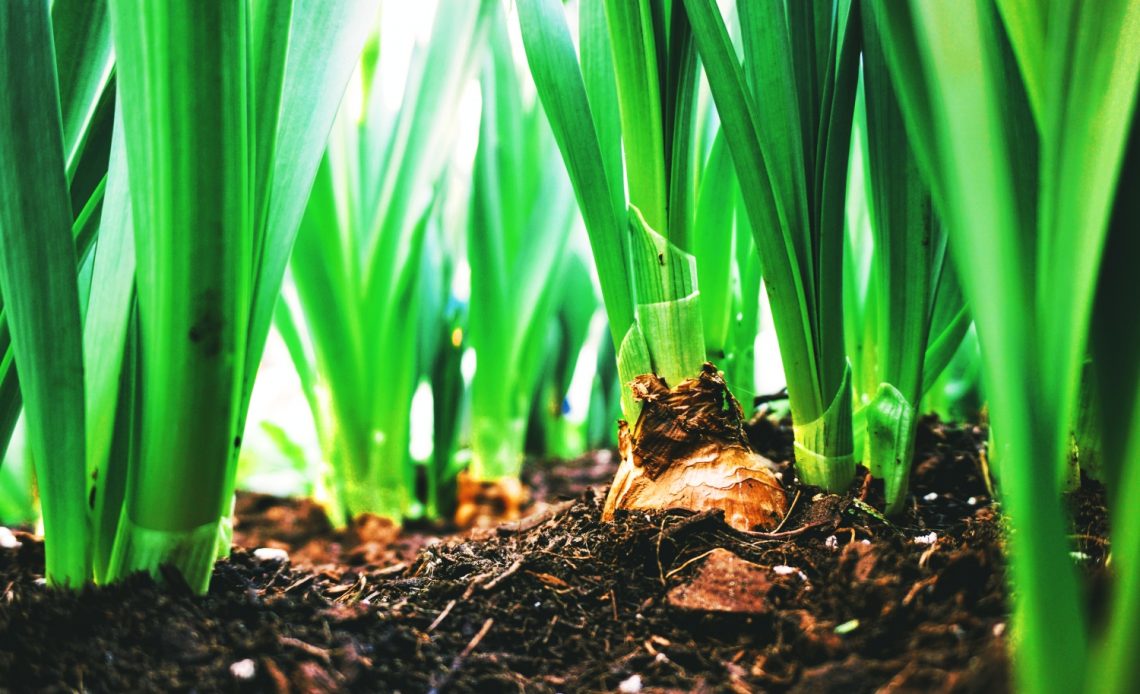

We’re here to help! Wild Yards is a completely free website that is 100% dedicated to helping you create a wildlife-friendly, sustainable yard. Read more
WildYards is reader-supported. When you buy a product through a link on our site, we may earn a comission. Every product is independently selected by our (obsessive) editors and our reviews are unbiased and objective. Read more about our mission or our privacy policy.
Tomatoes, squash, and peppers get all the glory. But the food you put on the table wouldn’t taste very good without strong seasonings like onions. These sulfur-rich Alliums, relatives of garlic and chives, are packed with flavor, and, with proper care, are incredibly easy to grow. Onions are hardy from zones 3 through 9. They’re an ideal choice for gardeners who have limited space since they can be grown in containers. If you’ve never grown onions, understanding the 8 onion growing stages will help you know what to expect from the time you start your seeds to the time to harvest your crop.
Onions can be started from seeds, sets, or transplants. Seeds germinate in 1 to 2 weeks and should be started indoors 10 to 15 weeks before the last frost of the season. Once they’ve been transplanted, your onions will rely on their true leaves to begin the next onion growing stage: bulb development. It can take anywhere from 100 to 175 days for onions to mature.
Stage 1: Starting seeds, sets, and transplants
Experienced gardeners often grow their onions from seeds. While they’re certainly much easier to start than asparagus seeds, it takes patience and consistent care to get them to sprout. If you haven’t got much time to devote to starting seedlings, you can speed up the growing process by planting sets or transplants, instead.
Starting onions from seeds
Onions grow best in mild climates, so start your onion seeds indoors 10 to 15 weeks before the last scheduled frost of spring. This way, by the time you transplant them to your garden, they’ll still be able to enjoy the cool weather before summer sets in. Growing your onions from seeds also reduces their chances of bolting.
Fill peat seeds pots with potting soil and sow 1 or 2 onion seeds at a depth of ¼ to ½ inch. Onion seeds don’t save very long. They’re only viable for about a year, so you’ll need to purchase new seeds at the start of the growing season. Even when using new seeds, onion growth can be patchy at first, but just be patient.
Water your onion seeds regularly. Keeping the soil moist, but not soggy, will help the seedlings sprout quickly. Set the seedlings in indirect sunlight. Move them to a shady spot on your porch or deck when the temperatures are above 55 degrees Fahrenheit, to help the seeds get adjusted to the outdoors.
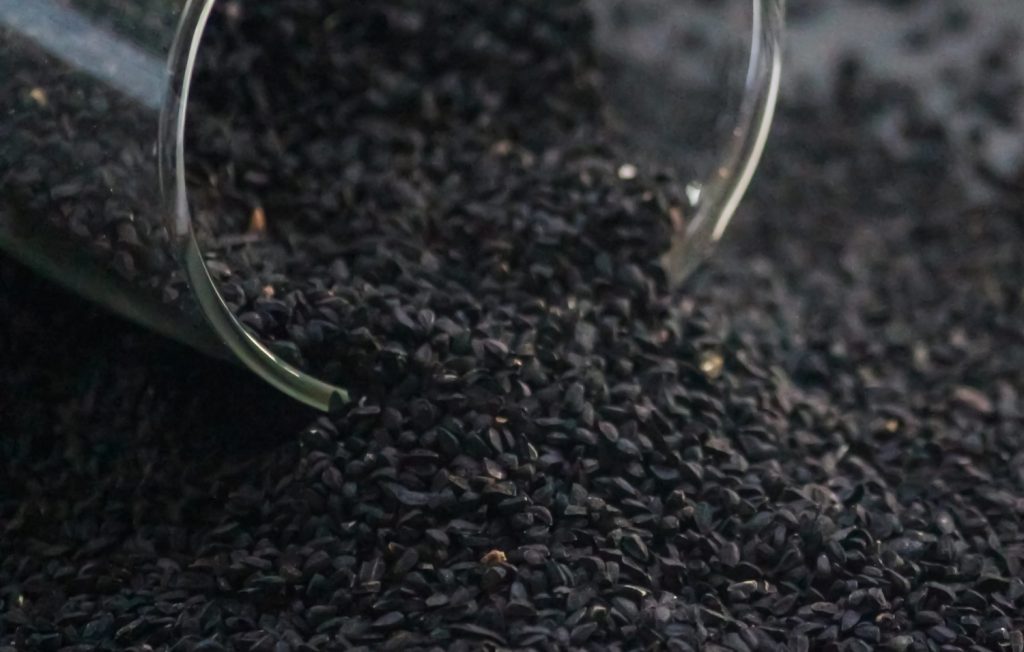
Planting onion sets
Onion sets look just like full-grown onion bulbs, only in miniature form. The sets are about the size of a nickel and are usually available from nurseries and feed and hardware stores. Starting your onions from sets is easiest and it’s the best way to ensure you get a good harvest. However, your options as to variety are fairly limited. You may only get to choose between white, yellow, and red onions.
It’s best to start onion sets out in the garden 2 to 4 weeks before the last frost. But before you plant them, you’ll need to examine your soil. Onions grow best in loose, fertile, loamy soil. If your soil is sandy or clay-rich, amend it with plenty of compost to add vital nutrients and prevent compaction.
Once the garden has been prepped, sow your onion sets 2 inches deep, so that the tops are at soil level. Space the sets 4 to 6 inches apart. Be sure to keep the soil moist as your onion sets settle in, but avoid overwatering them or they may rot before they take root.
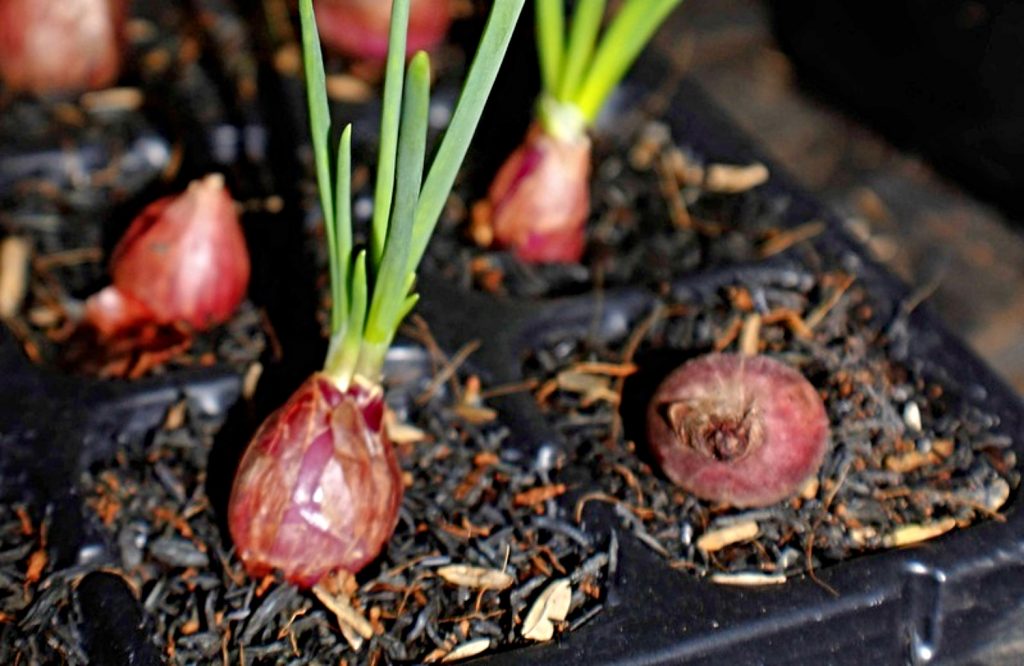
Growing onion transplants
Onion transplants are juvenile plants typically grown from the previous season. Starting your onion crop from transplants can speed up the onion growing stages significantly so you can enjoy your onion crop sooner. This method of starting onions is ideal for beginner gardeners, and for anyone who wants to maximize crop yield and minimize frustration.
You can purchase onion transplants from nurseries and seed catalogs. Your onion transplants may look pale and shriveled when they arrive. This is normal. The plants are dormant and should perk back up quickly, but you’ll need to plant them immediately once you get them. Remember to amend your garden soil as necessary ahead of time.
Plant your onion transplants 4 to 6 weeks before the last spring frost. The transplants should be spaced about 6 inches apart. Cover the bulbs with soil, ensuring that the top of the bulb is at soil level. Be sure to keep the soil moist to help revive the transplants, but, again, avoid overwatering them.
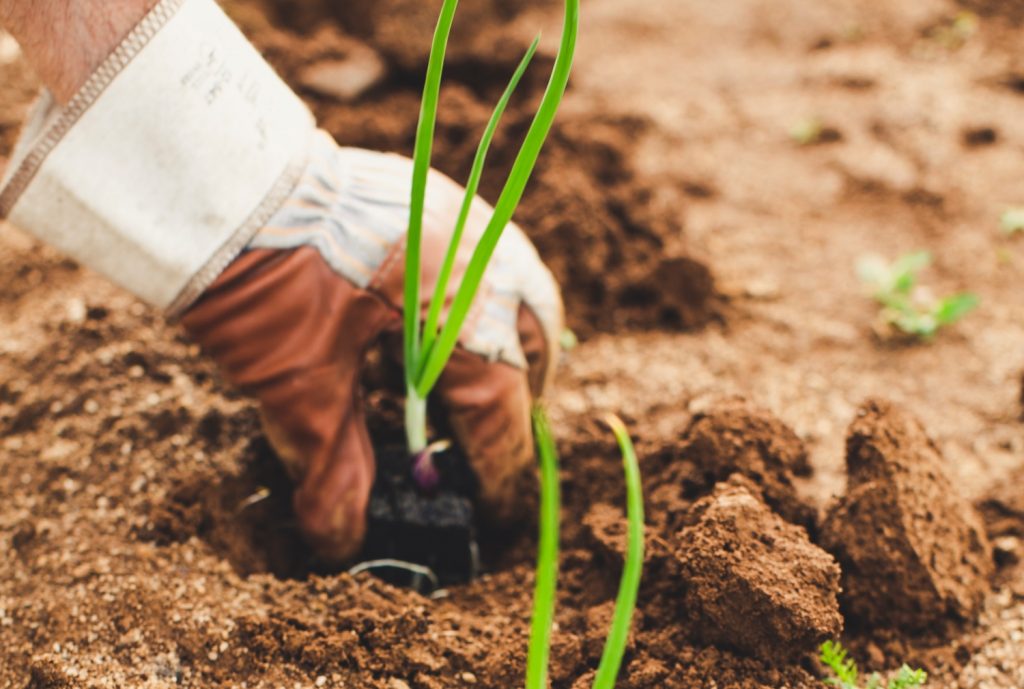
Starting onions in the fall
Onions love the cool weather, so you can grow them in the fall as well. Start your onion seedlings in June or July, and plant sets and transplants in August or September so you have plenty of onions to harvest before winter arrives.
Stage 2: Sprouting
Whether you start your onion crop from seeds, sets, or transplants, you’ll know the onions are developing when you see green shoots emerging from the soil. During this onion growing stage, the young plants will stop relying on their seeds for energy, and begin producing foliage necessary for photosynthesis. In the coming months, they’ll rely on their leaves to help them make plant food.
If you started your onions from seeds, the plant’s first set of leaves will be smaller and thinner than their adult leaves. Once the seedlings begin growing adult leaves, which are a darker shade of green and wider than seed leaves, they’re ready to be moved to the garden. Handle the seedlings gently during the transplanting process to avoid stressing them. Keep the seedlings 4 to 8 inches apart, being sure to give larger onion varieties plenty of room to grow.
Like carrots and radishes, onions are root vegetables. Only once their root systems have become established, do the plants shift their focus to producing foliage. So if you see new shoots sprouting up in your onion patch, you can be certain the young plants are growing well. This is the onion growing stage at which green onions are harvested. Use scissors to gather the tender green stems. Fresh green onions are delicious in casseroles and salads!
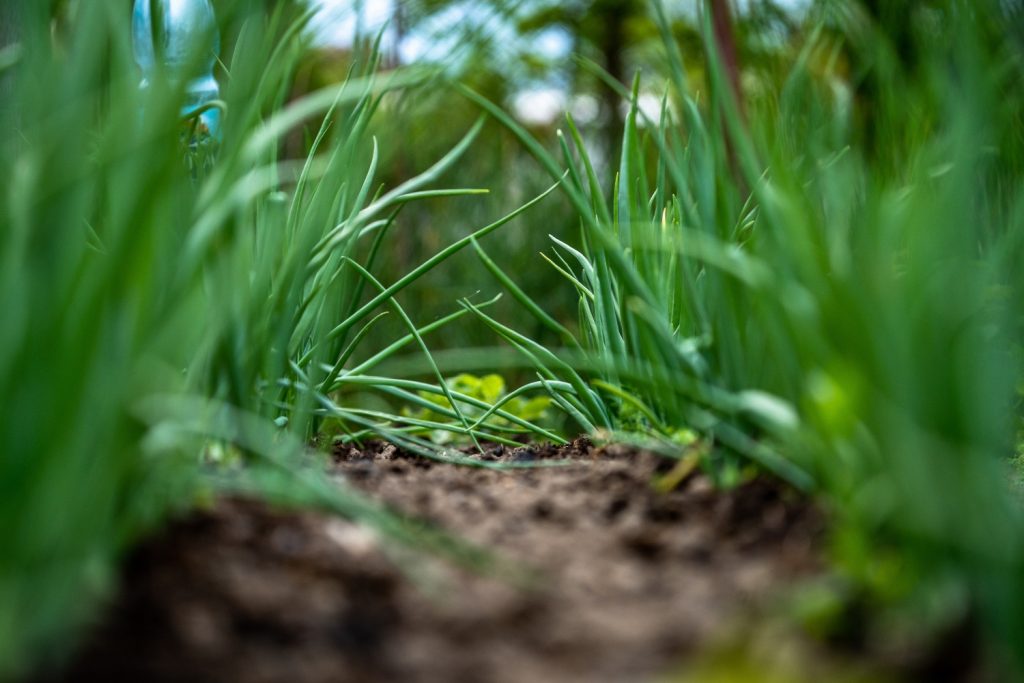
Stage 3: Leek stage
Once your onions start producing leaves, their growth rate will accelerate dramatically. Each new set of leaves helps the plant produce more energy. And as the leaves multiply, they grow thicker, allowing the plants to mature from the top down.
The leek onion growing stage lasts from the time your young onion plants produce their first true leaf until they’ve produced 4 to 7 seven true leaves. Many gardeners choose to harvest their onions during the leek stage for their potent yet palatable taste and crisp texture.
Of course, if you’re growing your onions for their bulbs, you’ll need to avoid harvesting them at this stage. If you’d like to enjoy fresh leek onions in addition to onion bulbs, consider growing an extra row to make sure you have plenty to enjoy.
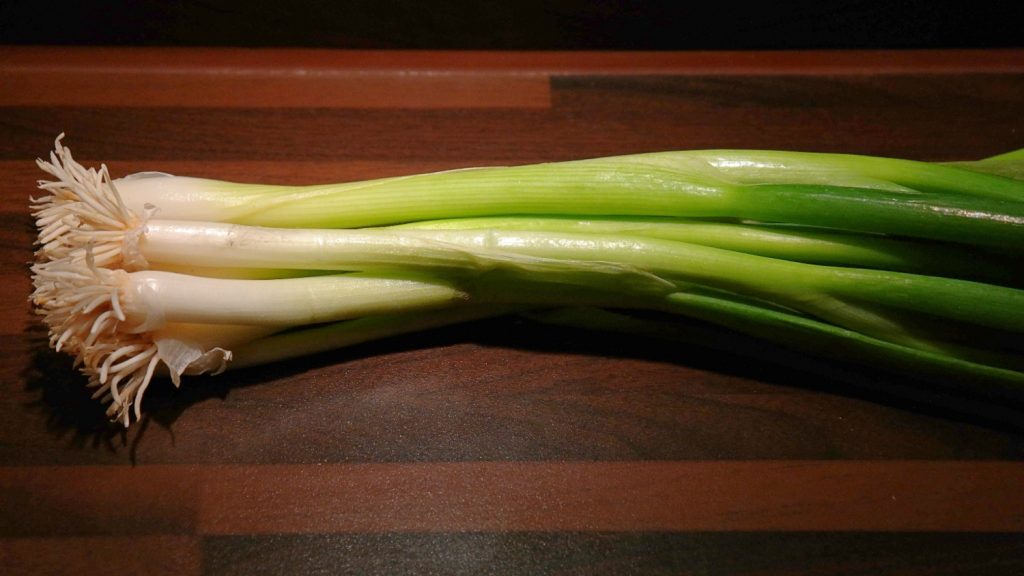
Stage 4: Bulb initiation
Onion plants need at least 4 leaves before they start growing bulbs. Onions are heavily influenced by the amount of light they receive, so the more light your onions get during this period, the better. If you live in a cooler climate, make sure your onion patch gets 6 or more hours of sunlight every day. If you live in a warmer region, it’s best to plant your onions in a spot where they’ll receive plenty of morning sun, but dappled afternoon shade to give them a break from the heat.
Variety also influences how rapidly (or how slowly) your onion bulbs develop. Long-day onions, like ‘Red Zeppelin’ and ‘Walla Walla’, require 14 to 16 hours of light every day to grow, whereas short-day onions, like ‘Red Creole’ and ‘White Bermuda’, only need 10 to 12 hours of light. Day-neutral types, including ‘Candy’ and ‘Cimarron’, are less reliant on sunlight than other types and can grow well with around 12 to 14 hours of sunlight daily.
Adding a heaping dose of compost to your crop’s soil during this onion growing stage will ensure the plants get all of the nutrients they need not just to grow, but to produce healthy growth that has a pleasant taste and texture. Onions love nutrient-rich soil. Fertilizing them right as their bulb growth ramps up allows them to produce bigger bulbs at a steadier pace.
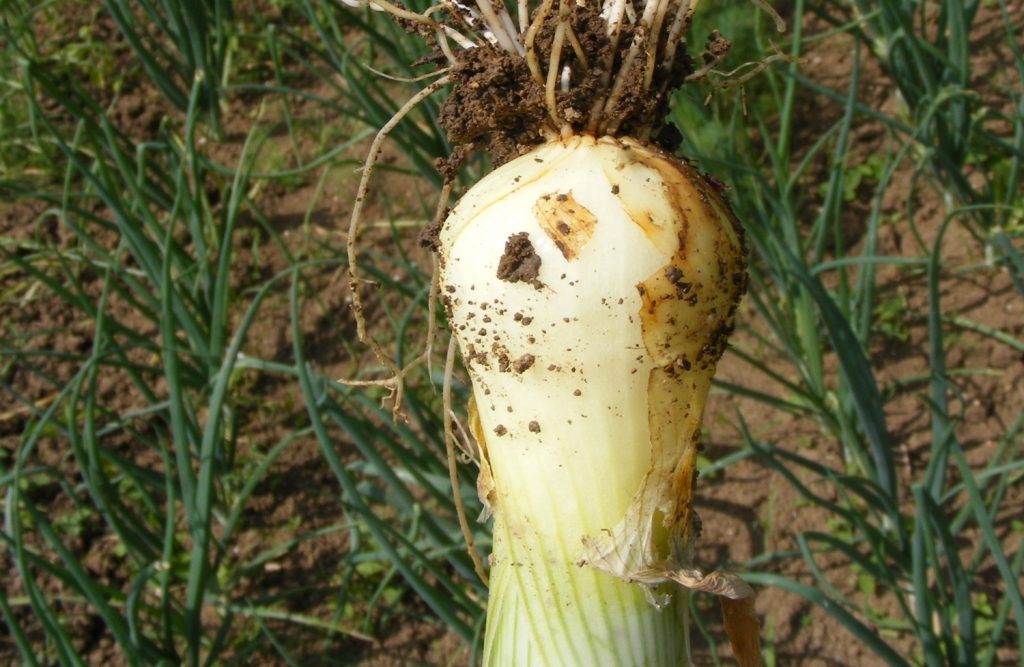
Stage 5: Bulb development
When your onion plants have developed 8 to 12 adult leaves, they’ve turned another corner of the onion growing stages. Foliage production will stabilize, and the plants will focus all of their energy on growing bigger bulbs. You’ll notice that their leaves will grow longer and wider at this point. This increase in the surface area enables plants to produce energy more efficiently.
As the leaves on your onion plants grow thicker, the bulbs will start getting larger, too. Each new leaf that develops creates another scale around the onion which, over time, will become a ring. When your onions get close to their maximum size, they will begin to pop out of the soil. An onion plant’s shallow root system is situated on the very bottom of the bulb, so there’s no need to cover the plants with more dirt during this time.
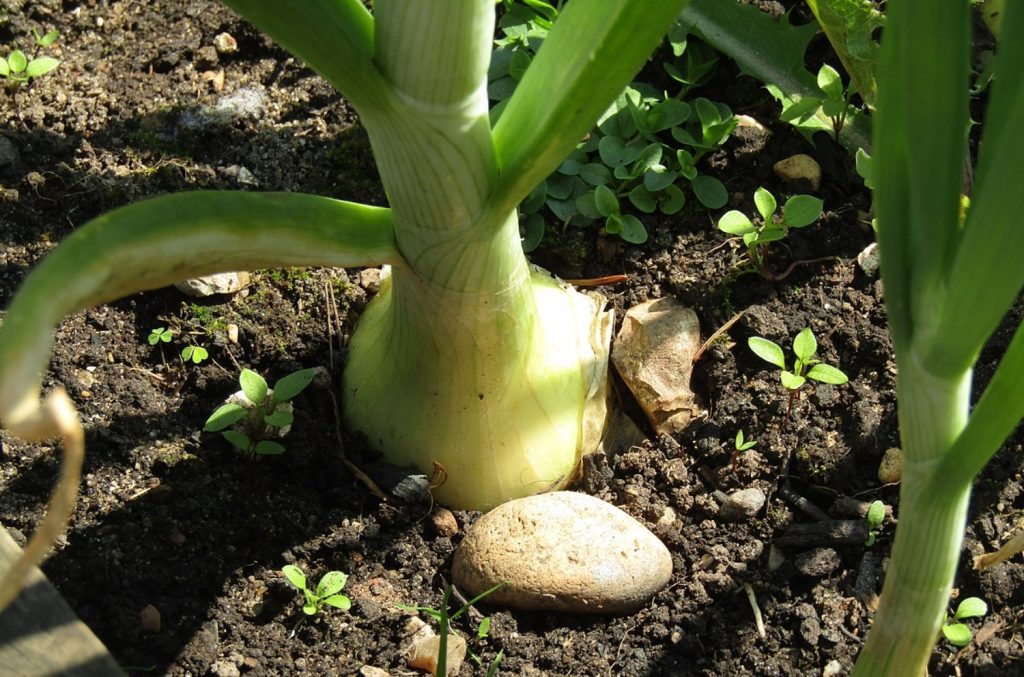
Stage 6: Harvest
As you near the end of the onion growing stages, you may find your patience wearing thin. Just when can you harvest the onion bulbs and start enjoying the fruits of your labor?
Toward the end of the season, your onion plants will move all of their energy from their leaves down into their bulbs. Funneling the last of the plant’s resources into the bulb causes the bulb to swell. This process is known as “tops down”, and it’s easy to see because the leaves of your onion plants will droop, turn brown, and die back. This signals that the onions are finally ready to be harvested.
To harvest your onions, grasp the plants firmly at the base of the foliage, where the leaves meet the bulb, and gently wriggle them out of the soil. If the onions just don’t want to let go, use a hand trowel to loosen the soil, then pry them up. It’s best to harvest your onions in the morning when the onions are nice and crisp.
Once you’ve harvested your onion crop, shake any loose dirt off of the bulbs and clip the tops back leaving an inch behind. Allow the onions to sit outside and dry for 3 to 4 days, then store them in a well-ventilated area for 2 to 3 weeks. When the skin surrounding the bulbs gets brown and papery, the onions have dried sufficiently and can be stored in a cool, dry, dark place.
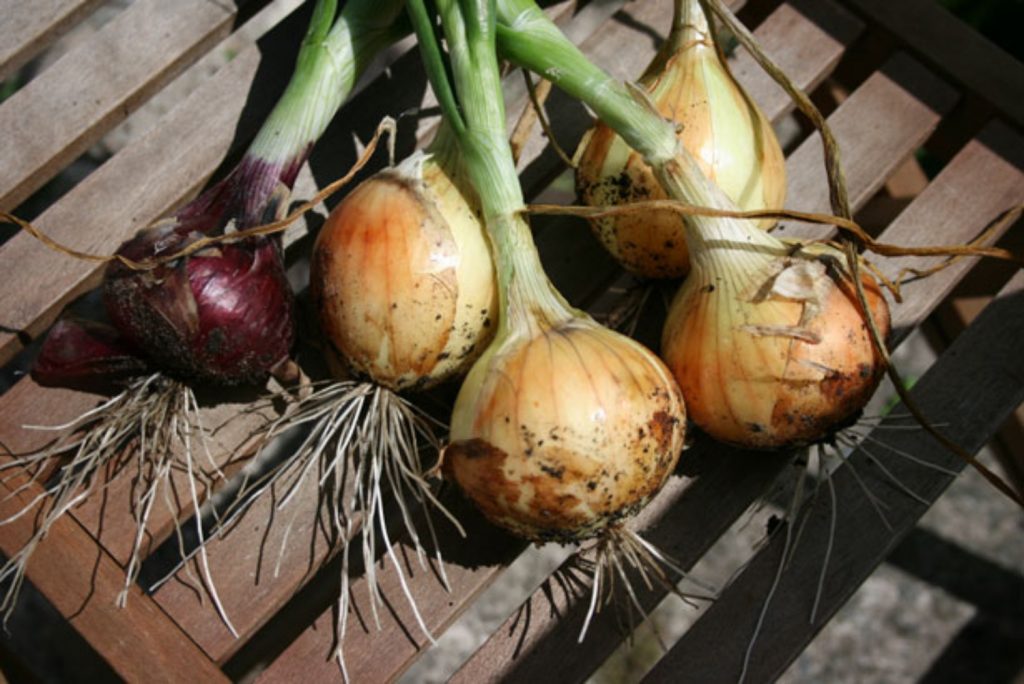
Stage 7: Flowering
Onions are usually grown as annuals, but they’re biennial in nature, meaning it takes them 2 years before they flower and produce seeds. If you want your onion crop to come back year after year, or if you simply wish to observe all of the onion growing stages firsthand, avoid harvesting your onions during the first year and allow them to go dormant over the winter.
When spring rolls back around, your onion plants will sprout up once again. After the initial sprouting stages, the plants will begin producing tall stalks with orb-shaped flower heads at the tips, which are incredibly popular with bees and butterflies.
Stage 8: Seed development
After the plant’s flowers have been pollinated, the onion reaches the final growing stage. During this last period of its life cycle, the onion plant produces seeds. Onion seeds are small and teardrop-shaped, similar to flax seeds, but black and with a rougher texture. Once the seeds have developed, the plants die, and the seeds disperse, settling into the soil where they prepare to sprout at the start of the next growing season.
How can you grow healthy onions?
Now that you have a better idea of what the plants should look like as they make their way through the 8 onion growing stages, it’s time to discover what it takes to grow delicious onions. Although onions are not particularly difficult to grow, they do have a very specific set of growing requirements. The better you meet those requirements, the healthier your onions will be.
Check the soil pH
Onions have shallow root systems that grow best in fertile soil that is porous enough to let air in and loose enough to let excess water out. But soil pH is another factor that you need to consider if you want your onion crop to succeed. Test your soil with an at-home test kit. Ideally, your soil should be slightly acidic with a pH range of 5.5 to 6.5. If your soil is too alkaline, use peat moss to acidfy it. And, if your soil is too acidic, add manure to raise the pH level a bit. Keeping your soil at the proper pH is key, as this allows onions to access all of the nutrients they need.
Water the plants regularly
Your onion crop will drown if you plant it in muddy soil. But onions need their soil to stay moist in order to grow. Test the soil regularly by sticking your finger 1 to 2 inches below the surface. If the soil starts to feel powdery, water your onions deeply with a gardening hose. Always water your plants in the morning to give excess water a chance to burn off before sundown. If you find that your onions are drying out too quickly in between waterings, spread a layer of wood chip mulch or lawn clippings around them to protect the soil from the sun.
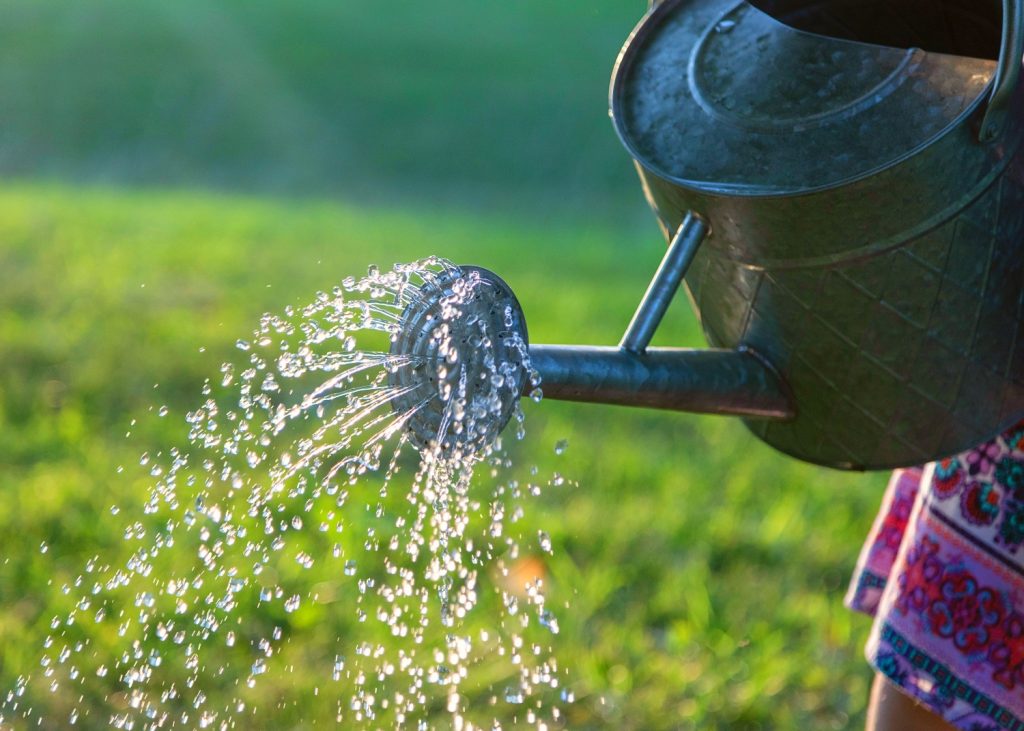
Choose the appropriate companion plants
Onions are heavy feeders, so avoid growing them near other heavy feeders, like broccoli, okra, and rhubarb. Instead, plant your onions near their favorite companions. Leafy green vegetables, like mustard greens and kohlrabi, benefit from being planted near onions because onions help repel a variety of garden pests, including aphids, beetles, spider mites, and thrips.
Watch out for pests
Thanks to their aromatic nature, onions aren’t especially popular with pests. However, deer have been known to nibble on onion tops when other food sources are scarce. And certain garden pests, like cutworms, slugs, snails, and bulb mites will also prey on them. Inspect your onions regularly for signs of infestation. If deer or damaging insects are ruining your onion crop, spray the foliage with Dawn dish soap deer repellent or a homemade insecticide as necessary to keep these pesky critters away.
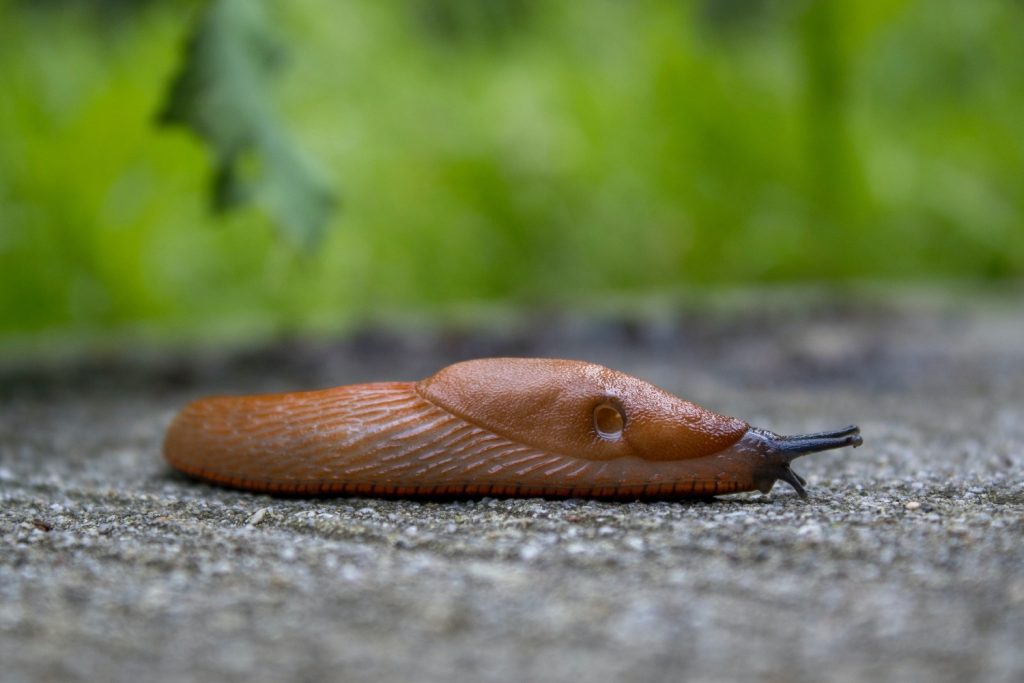
Are there any tricks for growing healthy onions?
Onions are a lot of fun to grow, especially when you speed up the onion growing stages by starting your crop from sets or transplants. Overall, there are no tricks for growing better onions. Just be sure to plant your crop where the plants get plenty of sunlight and take the time to meet all of the plants’ soil, water, and nutrient requirements. Fulfilling your onion crop’s basic growing needs will allow you to produce the best onion crop possible.
